Abstract
The effects of forskolin, isoprenaline, sodium nitroprusside and the frequency of stimulation were examined on cyclic nucleotide levels and tension responses in rabbit isolated right ventricular papillary muscles. Increasing the frequency of stimulation from 0.01 Hz to 1.6 Hz induced positive inotropic responses that were not obviously related to alterations in the level of either cyclic AMP or cyclic GMP. Isoprenaline induced rapid, concentration-related positive inotropic responses that were associated with increases in the levels of both cyclic AMP and cyclic GMP. There existed good correlations between the increases in tension and the concentrations of both cyclic nucleotides measured in the tissues. Forskolin induced concentration-related positive inotropic responses that were slow to develop. These responses were accompanied by concentration-related increases in the levels of cyclic AMP but not cyclic GMP. The tension responses correlated well with the levels of cyclic AMP measured. The cyclic AMP levels produced by forskolin were some 8 fold higher than those induced by isoprenaline for similar increases in tension. Sodium nitroprusside was without inotropic effect either positive or negative; it nevertheless elevated cyclic GMP levels whilst slightly reducing cyclic AMP levels. These data show that the ratio of cyclic AMP to cyclic GMP does not correlate well with changes in mammalian cardiac contractility. The data further suggest that whilst the intracellular concentration of cyclic AMP in rabbit ventricular myocardium may be an important determinant of positive inotropism, the relationship between the two parameters is more complex than simple proportionality between the tension generated and the amount of cyclic AMP measured within the cells.
Full text
PDF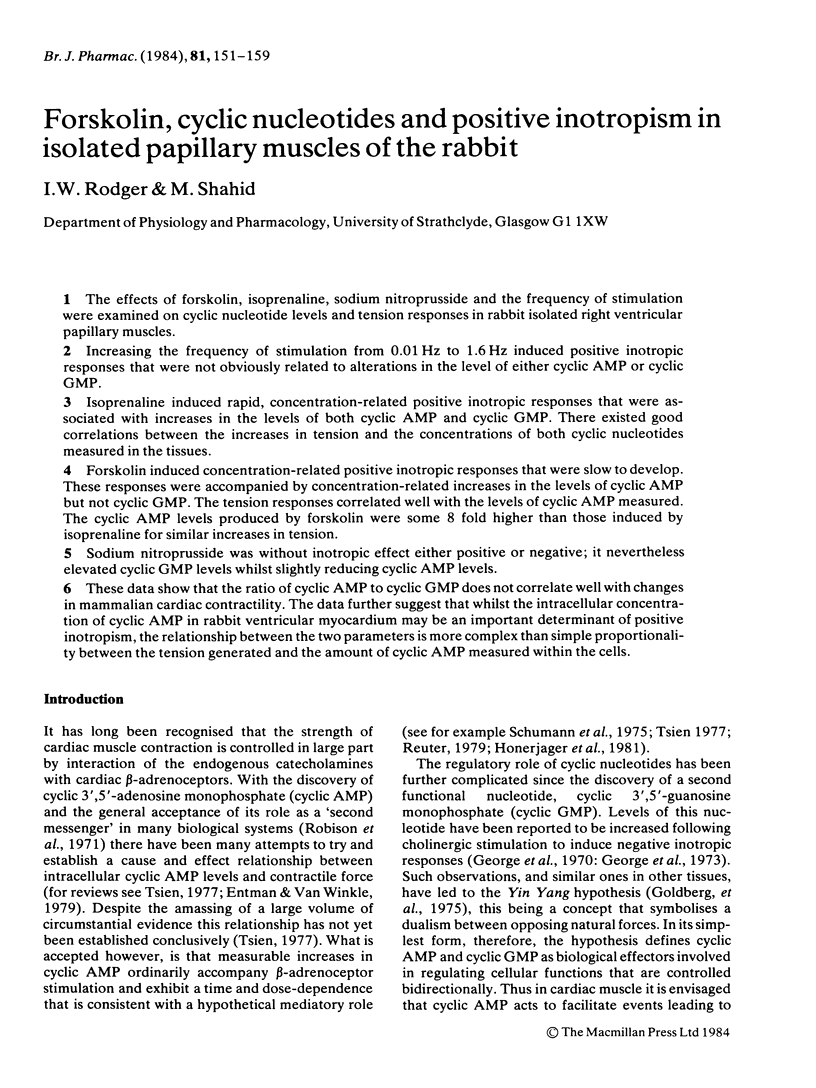
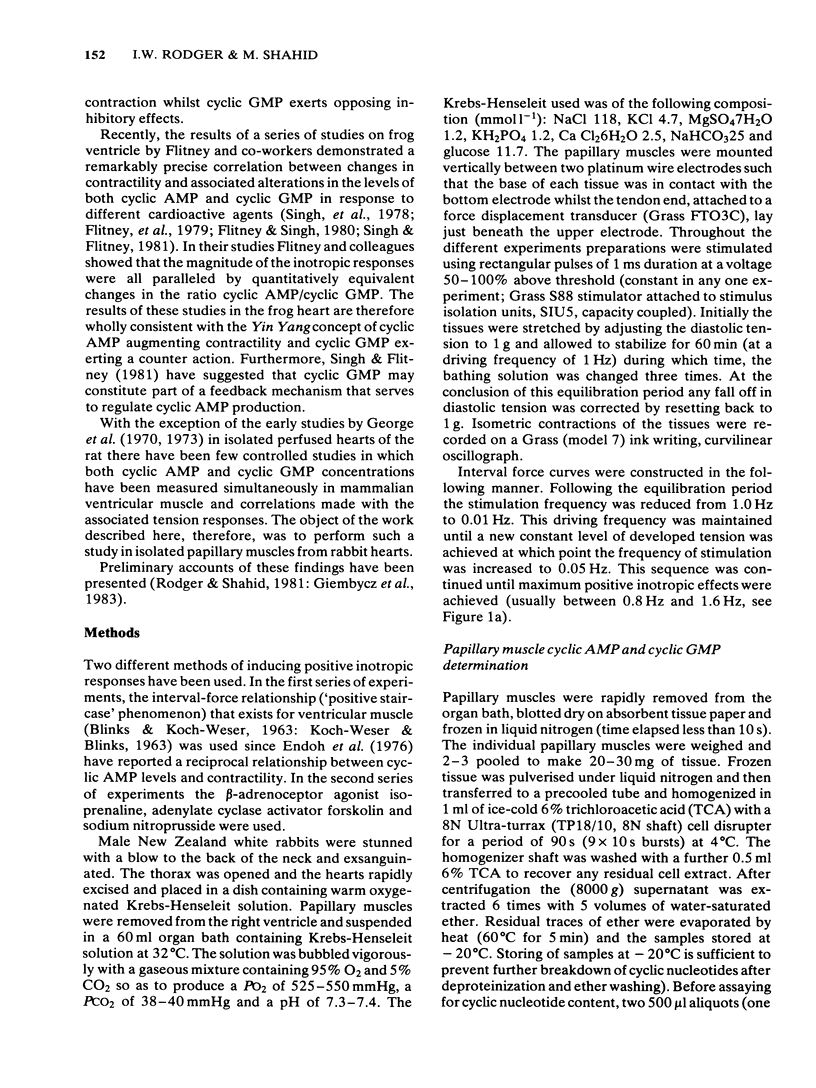
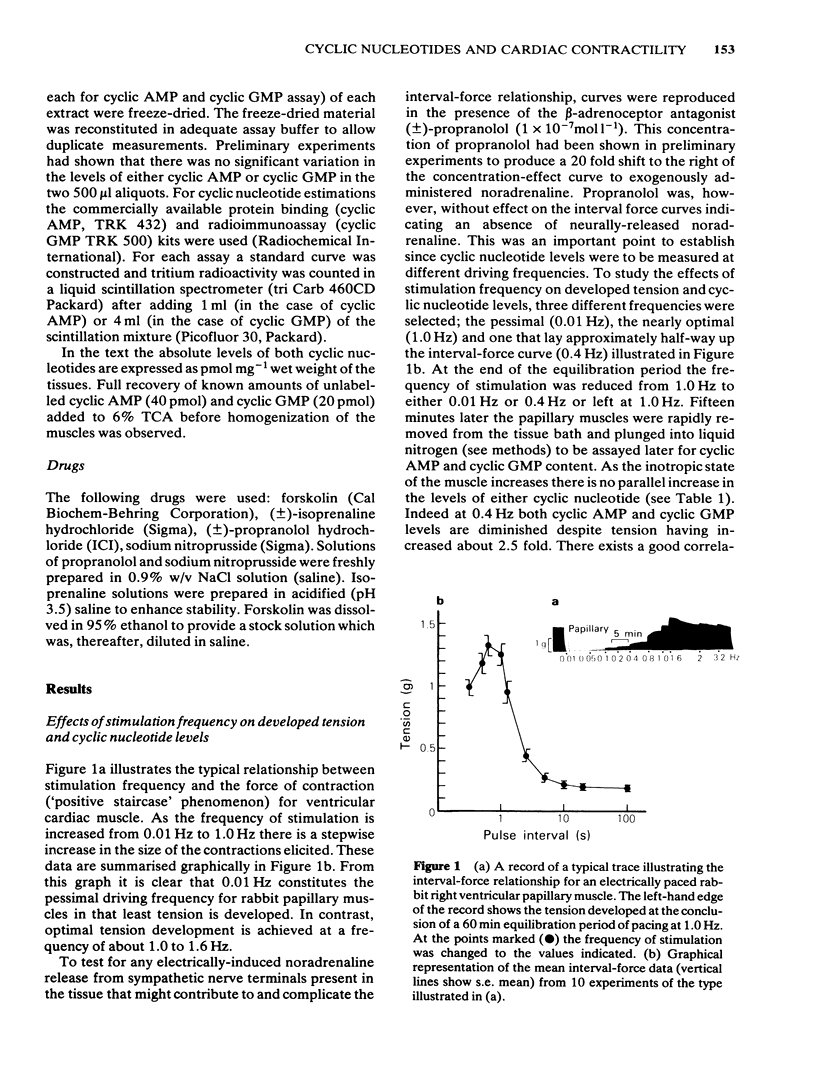
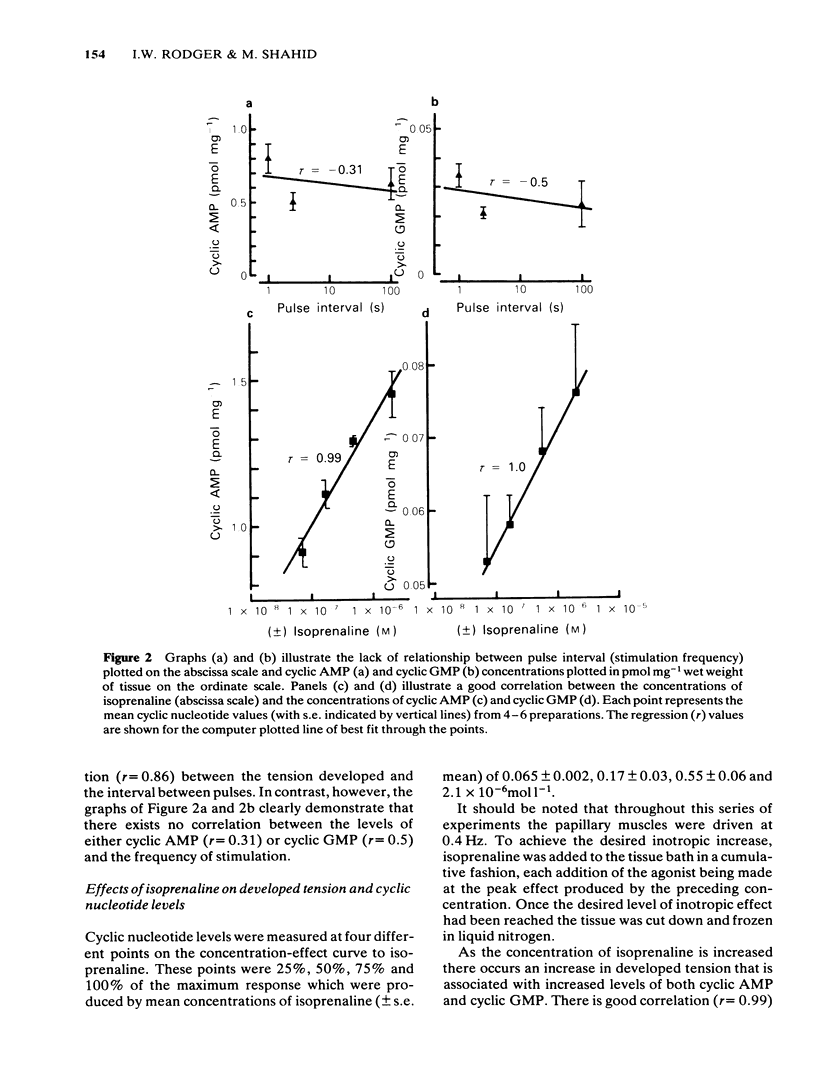
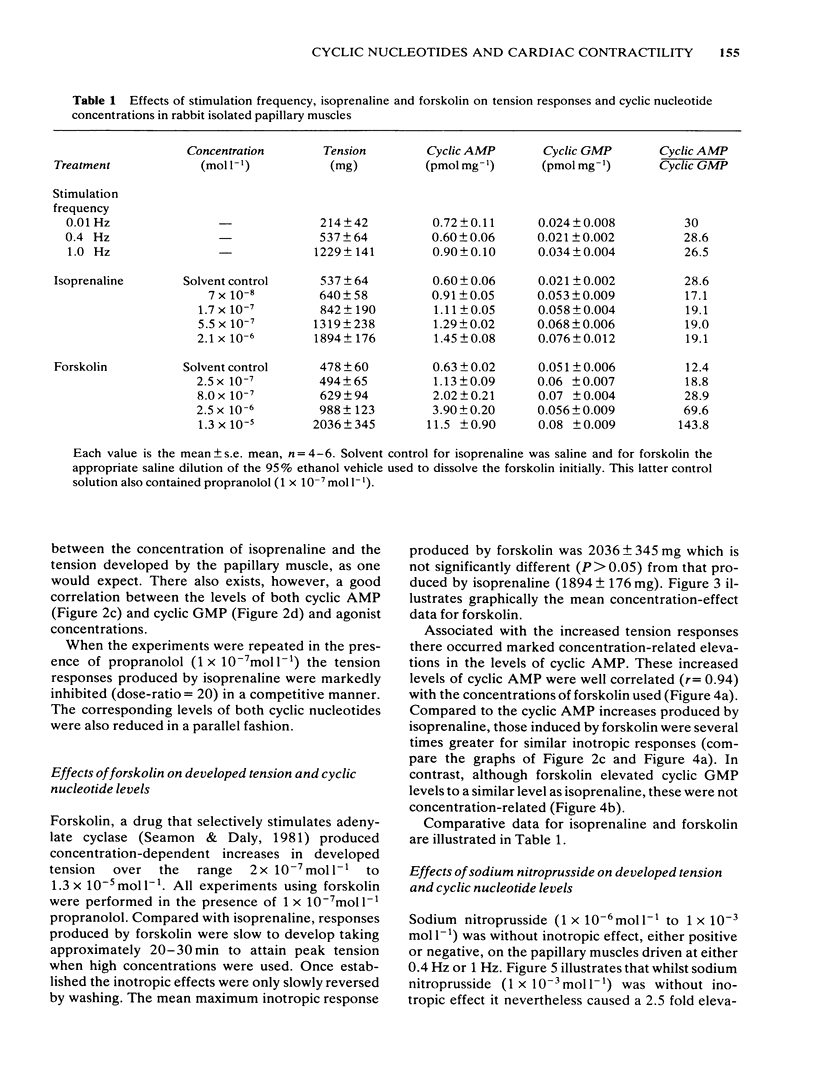
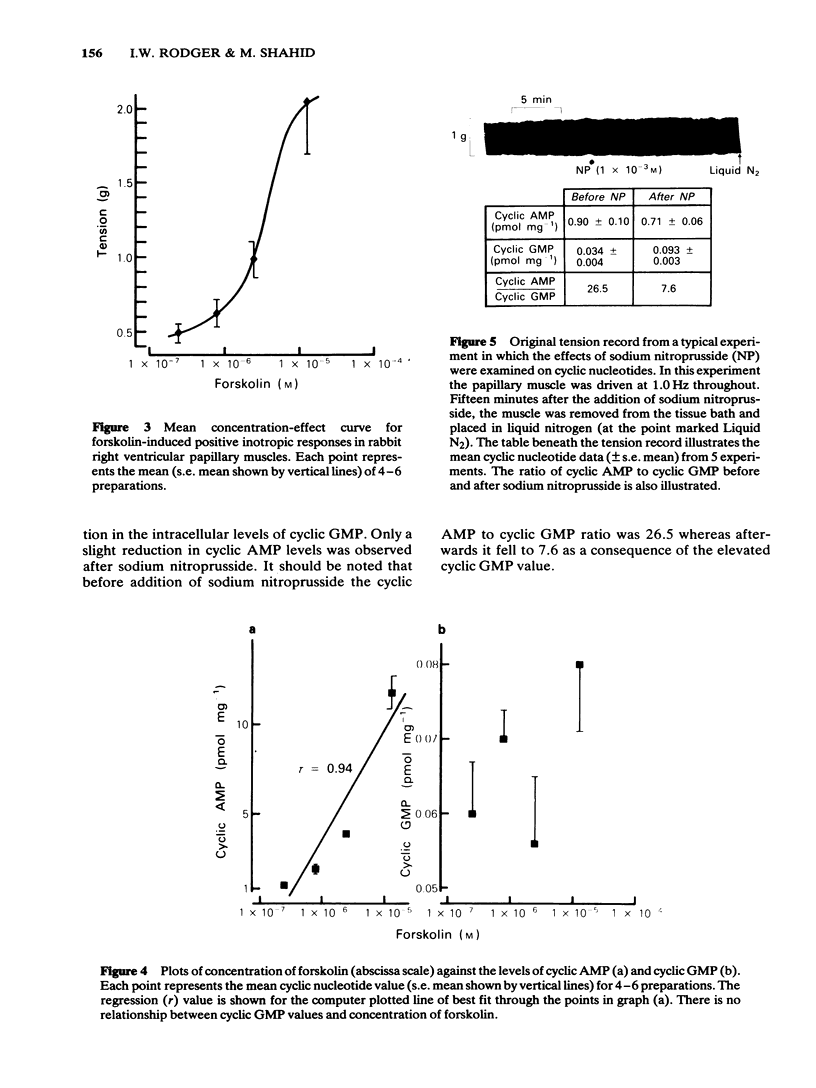
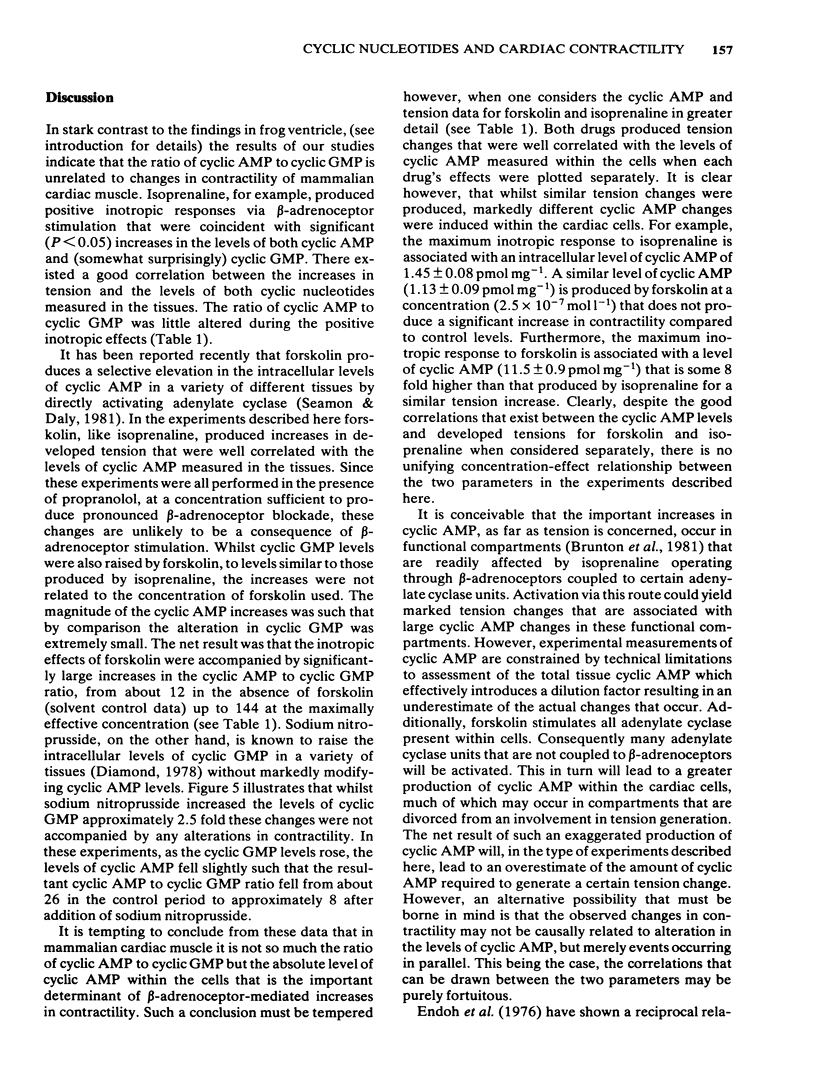
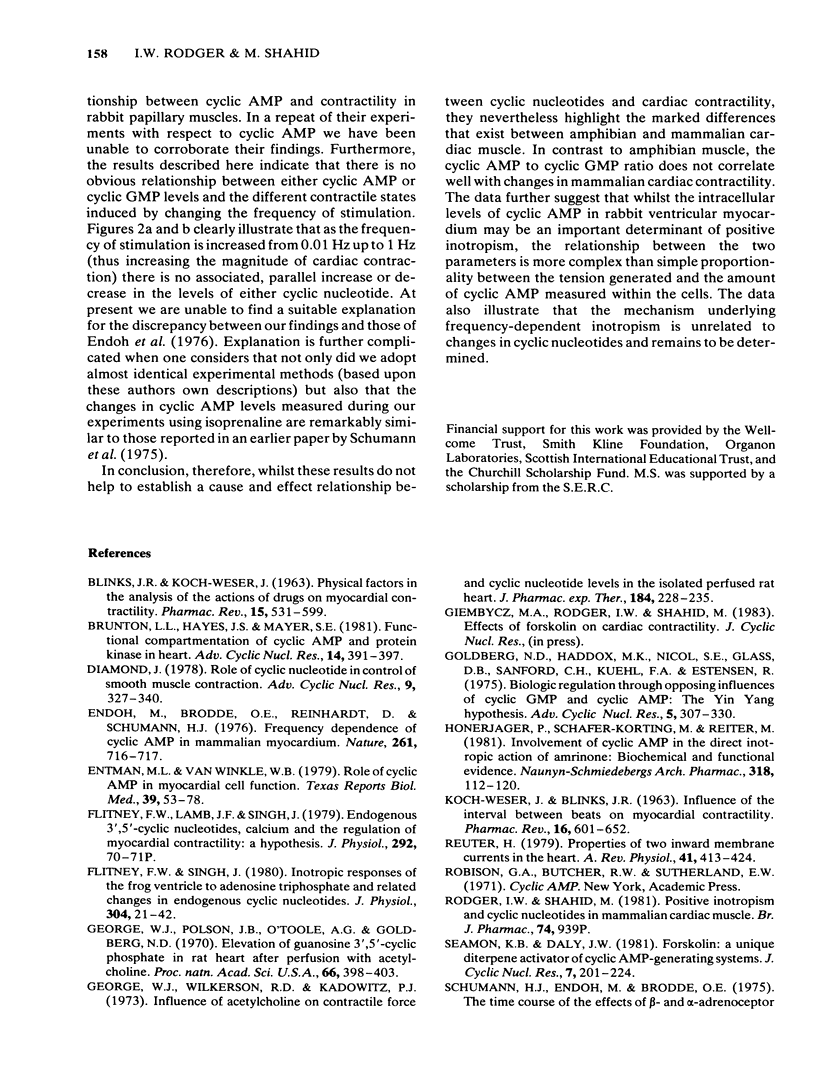
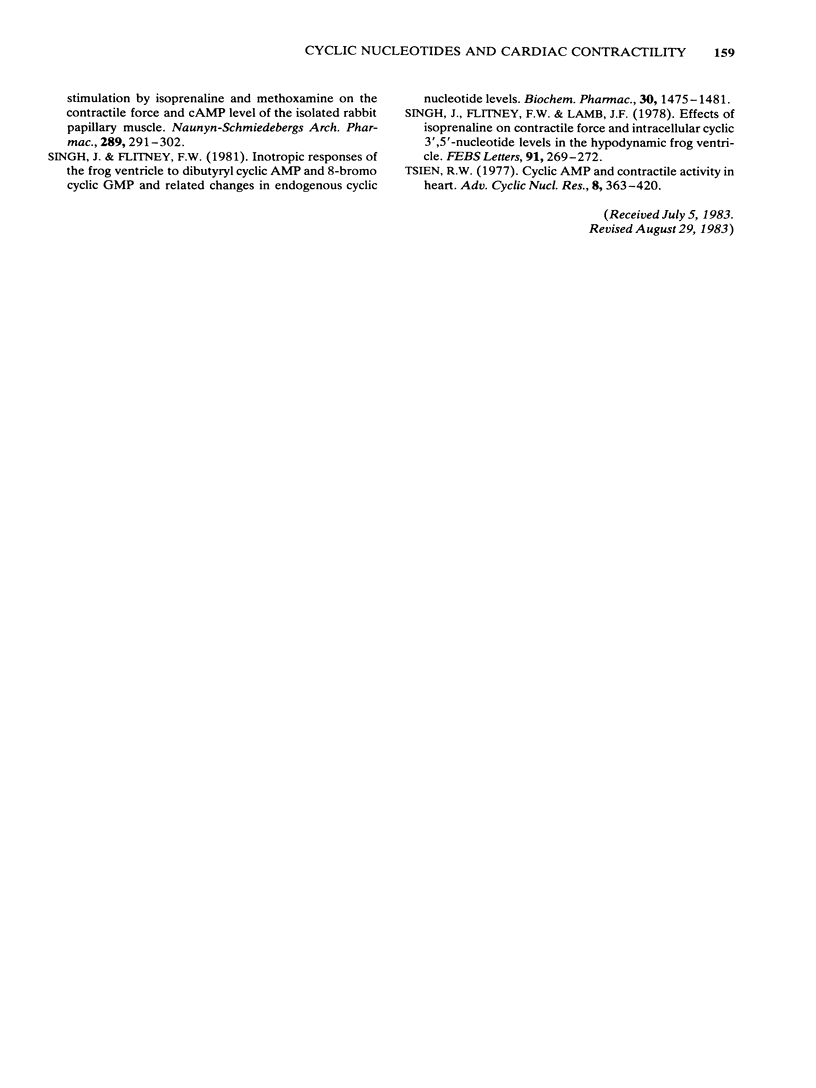
Selected References
These references are in PubMed. This may not be the complete list of references from this article.
- BLINKS J. R., KOCH-WESER J. PHYSICAL FACTORS IN THE ANALYSIS OF THE ACTIONS OF DRUGS ON MYOCARDIAL CONTRACTILITY. Pharmacol Rev. 1963 Sep;15:531–599. [PubMed] [Google Scholar]
- Brunton L. L., Hayes J. S., Mayer S. E. Functional compartmentation of cyclic AMP and protein kinase in heart. Adv Cyclic Nucleotide Res. 1981;14:391–397. [PubMed] [Google Scholar]
- Diamond J. Role of cyclic nucleotides in control of smooth muscle contraction. Adv Cyclic Nucleotide Res. 1978;9:327–340. [PubMed] [Google Scholar]
- Endoh M., Brodde O. E., Reinhardt D., Schümann H. J. Frequency dependence of cyclic AMP in mammalian myocardium. Nature. 1976 Jun 24;261(5562):716–717. doi: 10.1038/261716a0. [DOI] [PubMed] [Google Scholar]
- Entman M. L., Van Winkle W. B. Role of cyclic AMP in myocardial cell function. Tex Rep Biol Med. 1979;39:53–78. [PubMed] [Google Scholar]
- Flitney F. W., Lamb J. F., Singh J. Endogenous 3',5'-cyclic nucleotides, calcium and the regulation of myocardial contractility: a hypothesis [proceedings]. J Physiol. 1979 Jul;292:70P–71P. [PubMed] [Google Scholar]
- Flitney F. W., Singh J. Inotropic responses of the frog ventricle to adenosine triphosphate and related changes in endogenous cyclic nucleotides. J Physiol. 1980 Jul;304:21–42. doi: 10.1113/jphysiol.1980.sp013307. [DOI] [PMC free article] [PubMed] [Google Scholar]
- George W. J., Wilkerson R. D., Kadowitz P. J. Influence of acetylcholine on contractile force and cyclic nucleotide levels in the isolated perfused rat heart. J Pharmacol Exp Ther. 1973 Jan;184(1):228–235. [PubMed] [Google Scholar]
- Goldberg N. D., Haddox M. K., Nicol S. E., Glass D. B., Sanford C. H., Kuehl F. A., Jr, Estensen R. Biologic regulation through opposing influences of cyclic GMP and cyclic AMP: the Yin Yang hypothesis. Adv Cyclic Nucleotide Res. 1975;5:307–330. [PubMed] [Google Scholar]
- Honerjäger P., Schäfer-Korting M., Reiter M. Involvement of cyclic AMP in the direct inotropic action of amrinone. Biochemical and functional evidence. Naunyn Schmiedebergs Arch Pharmacol. 1981 Dec;318(2):112–120. doi: 10.1007/BF00508835. [DOI] [PubMed] [Google Scholar]
- KOCH-WESER J., BLINKS J. R. THE INFLUENCE OF THE INTERVAL BETWEEN BEATS ON MYOCARDIAL CONTRACTILITY. Pharmacol Rev. 1963 Sep;15:601–652. [PubMed] [Google Scholar]
- Reuter H. Properties of two inward membrane currents in the heart. Annu Rev Physiol. 1979;41:413–424. doi: 10.1146/annurev.ph.41.030179.002213. [DOI] [PubMed] [Google Scholar]
- Schümann H. J., Endoh S., Brodde O. E. The time course of the effects of beta- and alpha-adrenoceptor stimulation by isoprenaline and methoxamine on the contractile force and cAMP level of the isolated rabbit papillary muscle. Naunyn Schmiedebergs Arch Pharmacol. 1975;289(3):291–302. doi: 10.1007/BF00499982. [DOI] [PubMed] [Google Scholar]
- Seamon K. B., Daly J. W. Forskolin: a unique diterpene activator of cyclic AMP-generating systems. J Cyclic Nucleotide Res. 1981;7(4):201–224. [PubMed] [Google Scholar]
- Singh J., Flitney F. W. Inotropic responses of the frog ventricle to dibutyryl cyclic AMP and 8-bromo cyclic GMP and related changes in endogenous cyclic nucleotide levels. Biochem Pharmacol. 1981 Jun 15;30(12):1475–1481. doi: 10.1016/0006-2952(81)90370-1. [DOI] [PubMed] [Google Scholar]
- Singh J., Flitney F. W., Lamb J. F. Effects of isoprenaline on contractile force and intracellular cyclic 3',5'-nucleotide levels in the hypodynamic frog ventricle. FEBS Lett. 1978 Jul 15;91(2):269–272. doi: 10.1016/0014-5793(78)81189-2. [DOI] [PubMed] [Google Scholar]
- Tsien R. W. Cyclic AMP and contractile activity in heart. Adv Cyclic Nucleotide Res. 1977;8:363–420. [PubMed] [Google Scholar]


